Gibson Les Paul VS Fender Stratocaster, which is the better constructed instrument and why.
The purpose of this research is to examine both the Gibson Les Paul and the Fender Stratocaster to determine which of the two guitars are actually the better instrument. From previous research I concluded that in terms of versatility the Fender Stratocaster was the guitar that was most customizable due to the way it was constructed and this led me to conclude that the Stratocaster was indeed the best all-round mass produced electric guitar ever made due to factors like cost and the ease that the player can customize it to his or her own requirements.
However, I am now not going to be just looking at which guitar gives the most “bang for your buck” I will be concentrating on which of the two guitars is actually the better instrument.
Both the Gibson Les Paul and Fender Stratocaster have a long history as the most commonly played electric guitars as both Gibson and Fender pioneered the early days of the electric guitar with Leo Fender introducing the Stratocaster in 1954 and the Gibson Les Paul designed by Les Paul who was one of Americas most famous guitarists at the time being introduced in 1952. Les Paul made his first pick up out of a old telephone receiver and his first amplifier from his parents radio. Les Paul’s first idea for a solid body guitar was known as the log, he took it to Gibson in 1946 he was laughed at and shown the door.
Figure 1 The Log.
The log was a hollow body guitar with a solid piece of wood threw the middle with a pickup mounted to it to solve feed back issues caused by amplifying acoustic guitars. Les Paul is now credited with inventing the solid body electric guitar.
By 1952 Gibson introduced the first solid body les Paul model electric guitar and this was followed by Fender introducing the Fender Stratocaster in 1954.
Over the years that would follow these two guitars would evolve in many ways but always stayed faithful to the traditional shapes of the early models. Both Gibson and Fender made other models of guitars over the years such as the Telecaster and the SG for example but I feel the best comparison of the two company’s products are the Les Paul and Stratocaster.
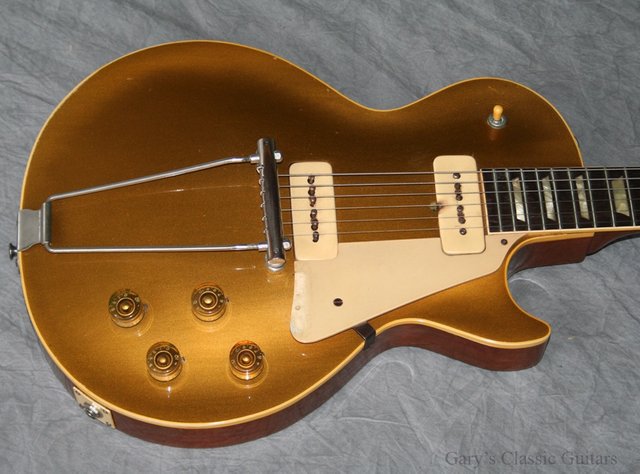
Figure 2 1952 Gibson Les Paul Goldtop.
Figure 3 1954 Fender Stratocaster.
What makes a great Guitar? Woods, pickups, neck, hardware, construction and Design are the main elements I am going to be looking at and to do this we will start with the top of the guitar with the tuners. I will be comparing stock components that come as standard on the guitars although there are many after market tuners that could be fitted to either of these guitars for the purposes of research I will stick to stock for now.
The tuners add the tension to the strings and as the name suggests are used to tighten the string until it is in tune. These days there are many kinds of tuners available including robotic tuners that will self tune the guitar and locking tuners that lock the strings in to aid the guitar staying in tune particularly when elements like tremolos are used as the increase and decrease in tension from the use of a tremolo can put guitars out of tune quite quickly if inferior hardware is used.
The Tuners

Figure 4
The above photo shows some examples of both Fender and Gibson headstocks to illustrate how the tuners fit to the guitars

Figure 5 Gibson standard tuners They are made from nickel with push-in bushing machine heads and closed construction housing. These tuners can come in a verity of colours like gold or silver.

Figure 6 Gibson’s vintage machine heads with pearloid buttons are a solid nickel, closed housing construction with traditional pearloid buttons.
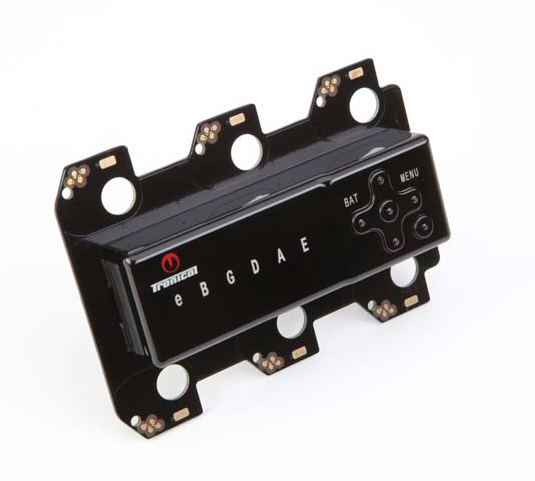
Figure 7 Gibson ETune.
Gibsons Min-ETune is a battery-powered robot tuner that tunes your guitar in seconds and offers 12 popular alternate tunings and six more you can program yourself. Opinions differ from guitarist to guitarist on ETune some more traditional players hate it and replace it with the tuners illustrated above, others love it’s abilities to change to alternative tunings quickly and effectively.
From my personal experiences with ETune I can say I like it but you may occasionally have to fine tune it but it gets you close to in tune very quickly. It’s a bit tricky when restringing the guitar but once used to it I found it good as it prevents string snapping while tuning up a restrung guitar for the first time. A demo of Etune can be seen here. Figure 8 Gibson ETune demo video
With Fender they offer a range of tuners made from nickel that are usually period related to what they looked like at certain years in Fenders history.
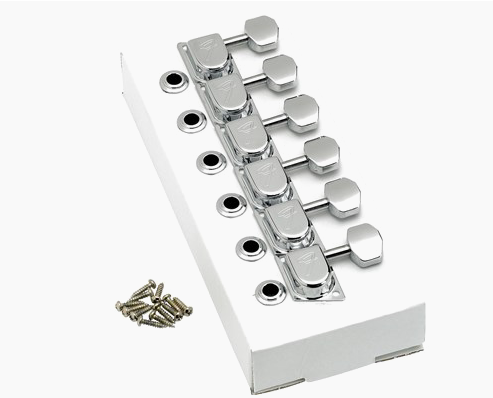
Figure 9 Fender 70’s F logo tuners these can’t be retro fitted to American Standard or American Deluxe or Standard series models.
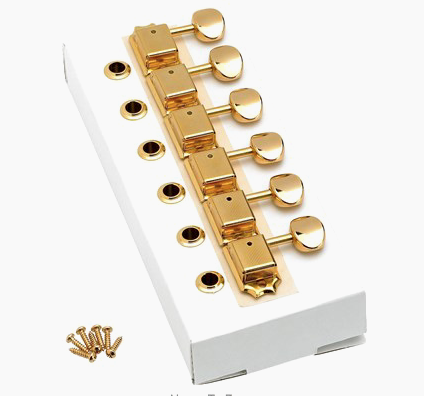
Figure 10 American Vintage, Classic and Road Worn Series Tuners.
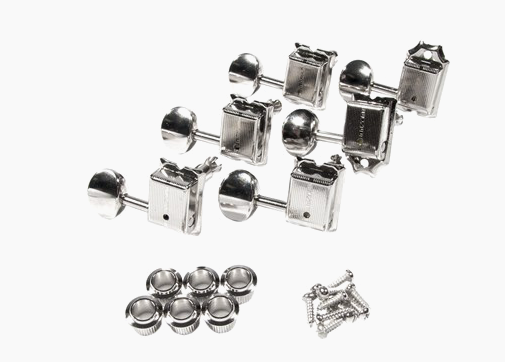
Figure 11 Fender individual tuning.
Fender pure vintage tuners are crafted where possible on the same tooling and machinery as our original-era Fender parts but will not fit American Standard and American Deluxe models.
It would seem that care has to be taken when replacing Fender tuners as they appear not to be as interchangeable as you would think they maybe.
The Fret Board
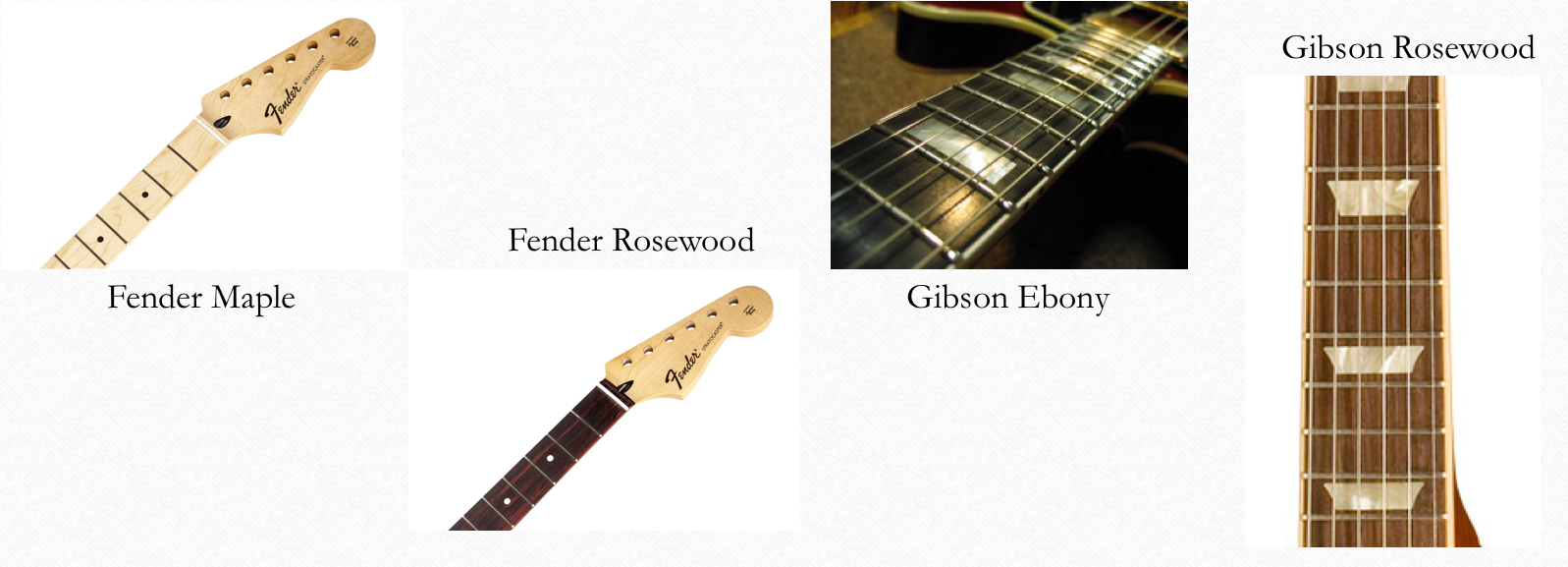
Figure 12 Necks from various woods.
Fret boards for both Gibson and Fender are offered in various woods although certain woods only appear on high end models the most noticeable being Ebony, these days you would only find ebony fret boards on the custom range from Gibson.
Ebony has become very rare and is only available now in Cameroon and 75% of the wood is controlled by subsidiaries of Taylor Guitars who have stopped the practice of chopping down 10 trees to get 1 tree of pure dark ebony so streaky Ebony is likely to be more likely now. A good explanation by Bob Taylor as to why Guitars featuring such woods cost more can be found here. Figure 13 Ebony and Guitars
Rosewood is far more common place and can be found on most models of guitars from both Fender and Gibson. Fender offer a Maple fret board where as Gibson does not.
Gibson’s fret board has 22 medium jumbo frets made from nickel silver wire. Rosewood fret boards are thought to have a rich tone. The Les Paul fingerboard has acrylic trapezoid inlays. The nut on the Les Paul is made from the material Corian but other materials have been used over the years on various models. The width of the neck and fret board varies on different models and on different years.
The Fender rosewood neck usually comes with 22 medium jumbo frets made from nickel silver wire. As with Gibson the rosewood fret board is believed to offer a rich tone.
The Fender maple fret board also comes with 22 medium jumbo frets made from nickel silver wire.
Fender offer nuts in a verity of materials from the vintage style bone nut to roller nuts in brushed chrome to locking nuts as the use of tremolos means players have different requirements.
The type of wood used for the fret board is said to effect the tone of the guitar as would most of the woods in the other components that make a guitar.
The Neck
The neck on the Gibson Les Paul standard is made from grade A Mahogany, the width and profiles have changed over the years here’s a few significant changes.

Figure 14
Gibson neck specifications.
1958 was a big neck.
1959 was a big neck with jumbo frets, (considered the perfect Les Paul) by some.
1960 kept big frets but the neck profile was much slimmer.
The Fender neck is usually made of maple and sometimes has a “skunk stripe” a thin walnut strip running down the back of the neck. Fender like Gibson have made numerous changes to the neck profile over the years.
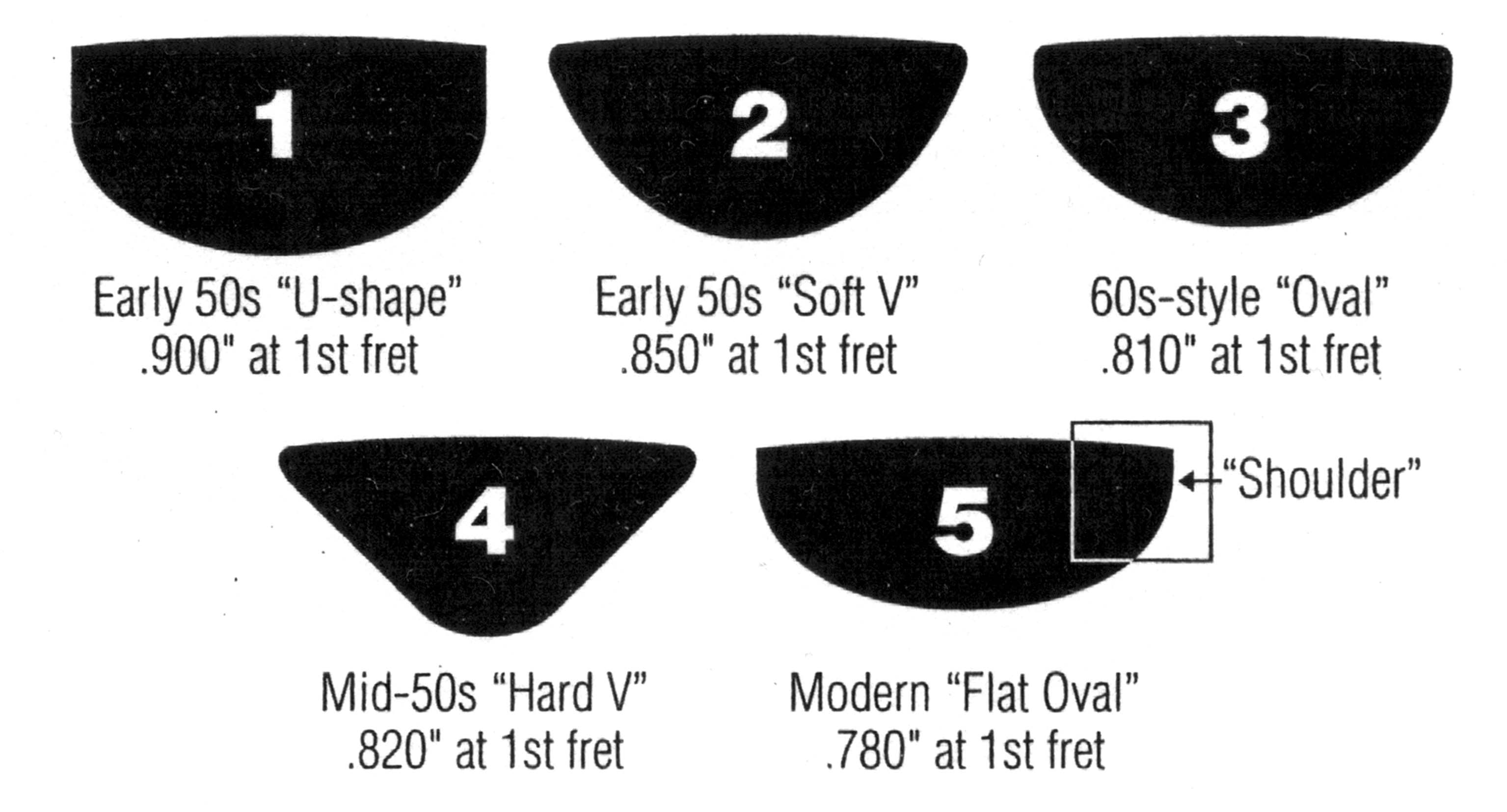
Figure 15 Fender neck profiles.
The truss rod. Both guitars have a truss rod that tensions the neck to keep it straight and help to adjust the string height. (the action)
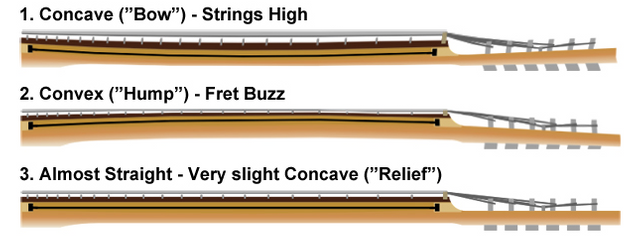
Figure 16 Truss Rod
The Neck Joint.
Gibson for the most part have favoured threw necks, this is where the wood that makes up the neck continues into the body and is glued in effectively as close as you can get to making the neck and body one unit. The use of the glues has been closely looked at over the years and it is widely believed that Hide glue is the best and it is found in the higher end of the Gibson range as it is said it is also good for the acoustic qualities.

Figure 17 The Gibson neck joint.
Fender favour a bolt on neck and over the years this join has either had 3 or 4 screws depending on year of manufacture.
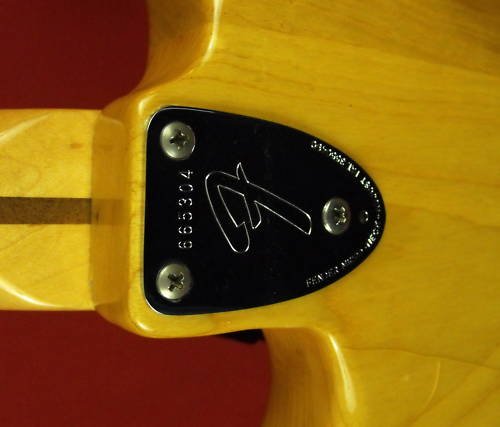
Figure 18 Fender 1970’s 3 screw join.

Figure 19 Fender 4 screw join, note the small hole in the plate, this is for neck angle adjustment on USA models.
The Body.

Figure 20
On the left is a Fender Stratocaster body it has been routed out to allow for the electrical wiring, pickups, pots, and on the reverse the tremolo system. The body is made of Alder and in a USA model you would expect to find the body made from 2 or 3 pieces of wood but on Mexican or Chinese models it would be more. Stratocaster body’s are either painted or lacquered in the case of the natural wood versions.
On the right is the Gibson Les Paul body, It is made from 1 or 2 pieces of Mahogany and because the earlier Les Paul’s where so heavy modern versions are now chambered for weight relief. The body is also routed out for the electrical wiring, pickups and pots. As can be seen the neck is placed far deeper in the body to allow for the threw neck.
The Les Paul will have a Maple top added.
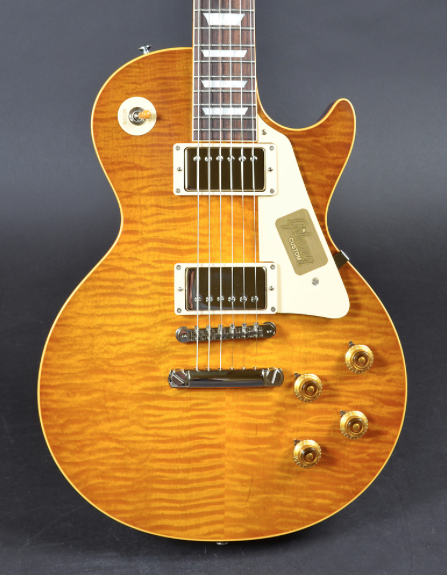
Figure 21
As can be seen the 2 pieces of matched Maple that make up the top of the Gibson.
The pick ups
For both guitars there is a huge amount of pickup options available from both Fender and Gibson and third party pickup manufacturers.
In general you would expect to find in a Les Paul either 2 or 3 sometimes Humbucker pickups or sometimes 2 P90 pickups. In the case of the Stratocaster you would typically expect to find either 3 single coil (SSS) configuration or a combination of single coil and Humbucker pickups like a SSH configuration. At this point it’s worth noting that you could put the same Humbucker from a Gibson into the Fender such is the customizable element of the Stratocaster.
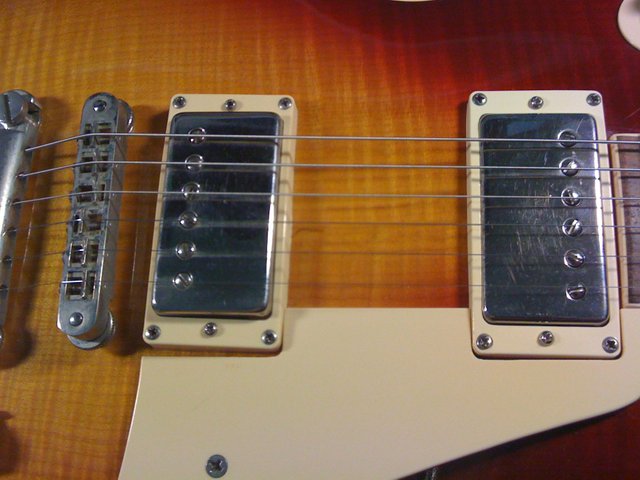
Figure 22 Gibson with Humbucker pickup.
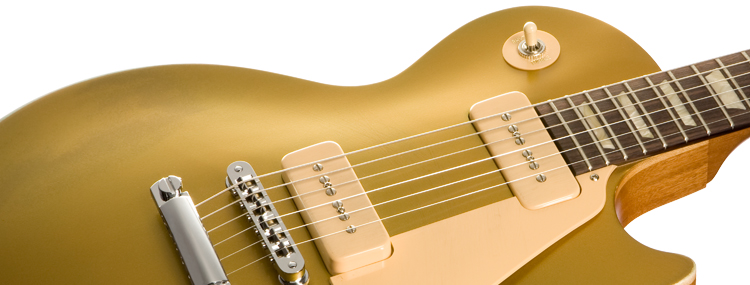
Figure 23 Gibson with P90 pickups
Popular pick up choices for the Les Paul would be.
The PAF, the original Gibson pickup developed in 1955 by Seth Lover. All pickups had been single coil up until the PAF was invented.
Pearly Gates from Seymour Duncan. These pickups are Humbuckers and are mainly associated with Billy Gibons.
Burstbuckers, these are Gibson pickups that try to authentically recreate the classic PAF pickup sound in a modern pickup. The Burstbucker 2 is slightly hotter and Les Paul Standards often come with a combination of Burstbucker 1’s and 2’s.
57 classics and Dirty Fingers are also popular. The verity of pickups available is huge and in the case of the Les Paul pickups are one of the few things the player changes when customizing his guitar.
The Fender uses various combinations of single coil and Humbucker pickups some typical configurations would look like this.
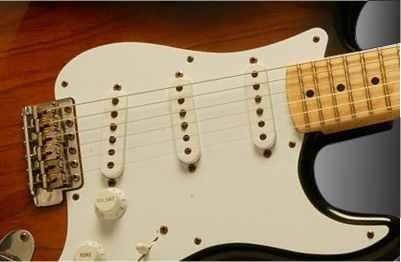
Figure 24 3 single coil pickups known as SSS
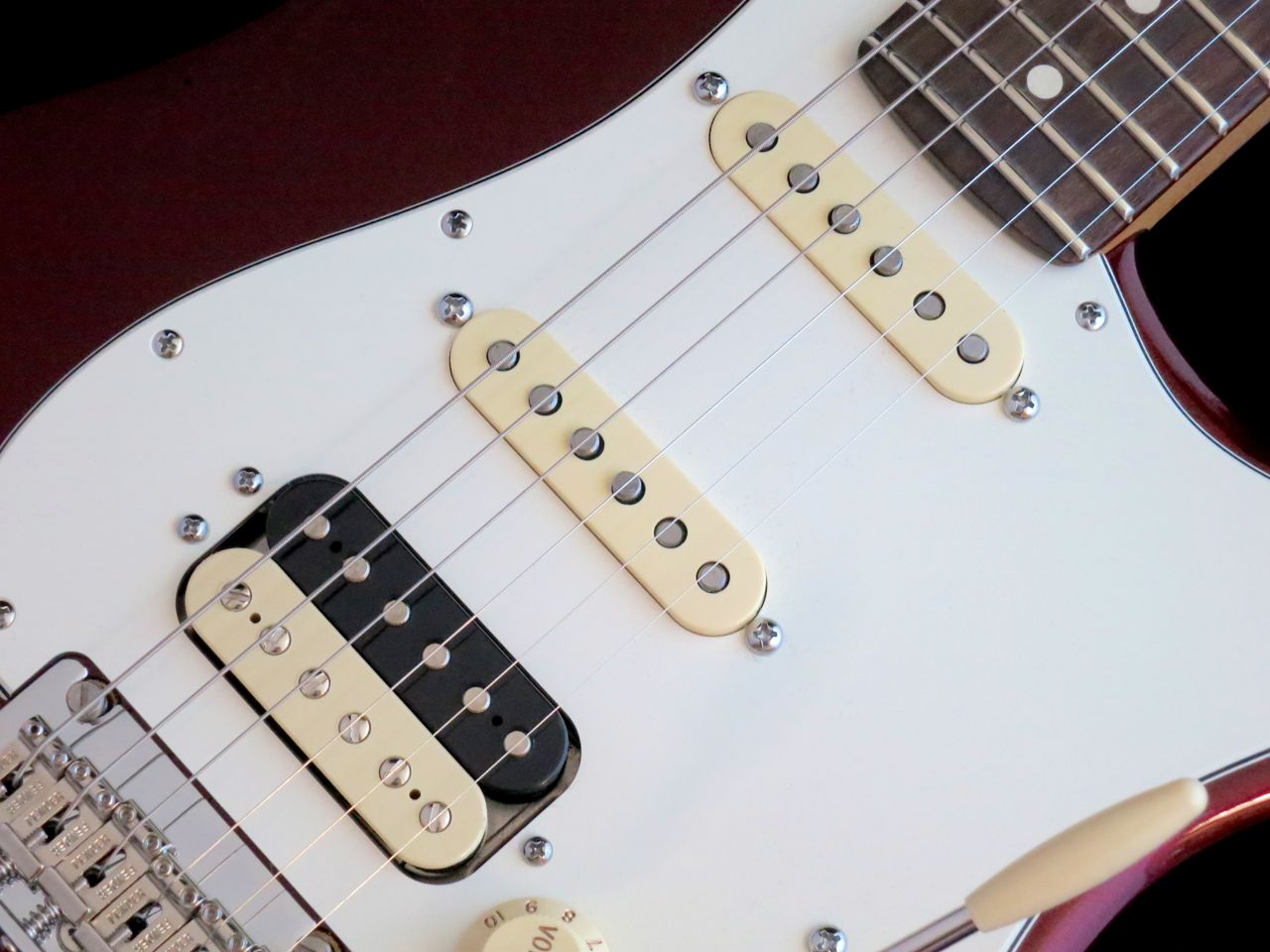
Figure 25 2 single coil and 1 Humbucker known as SSH
Among the most highly regarded pickups for the Stratocaster would be.
Fender custom shop 54,69
Hotrails
EMG pickups
Abigail Ybarra wound pickups
There are to many pickups available on todays market to list them all but both guitars have a pretty wide range of choices when it comes to upgrades or getting the right tone.
How good a pickup sounds is dependent on how it’s constructed and from what materials and over the years it has become almost a science but the best pickups are still considered to be those that are closest in the way they where made during the classic years of both guitars.
How the pickup works.
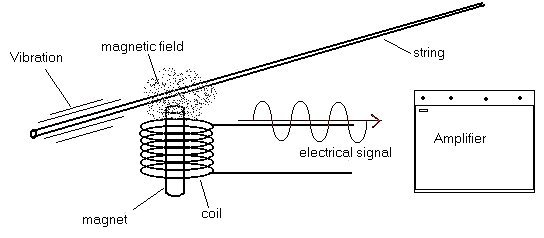
Figure 26
The pickup is made up of a magnet surrounded by coiled copper wire. When the guitar string is plucked it disturbs the magnetic field the copper wire relays the movement as an electrical signal to the amplifier. The tone of the pickup is mainly determined by the amount of copper wire and the way it’s wound.
A good interview with Abigail Ybarra is available here: Figure 27 The queen of tone
The Electrical wiring.
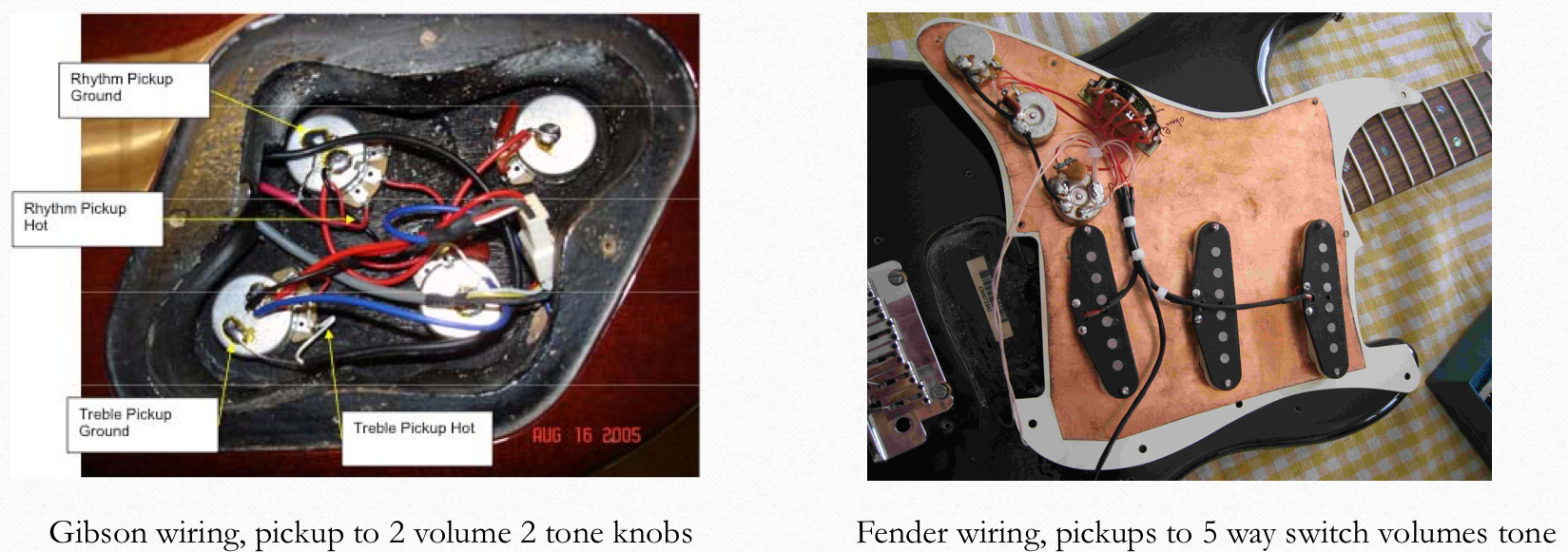
Figure 28
Both guitars have similar components in their wiring but in the case of the Fender the scratch plate is used to house the electrics such as pickups and pots. Regardless of this they are wired up in a similar way. The pickups will be connected to the volumes and tone pots then connected to the ¼ inch jack socket that serves as the output to the amplifier.
In many cases you will find the use of 250k volume and tone pots with single coil pickups or P90’s and 500k volume and tone pots with Humbuckers. The K for a pot is a resistance value.
Bridges and saddles.
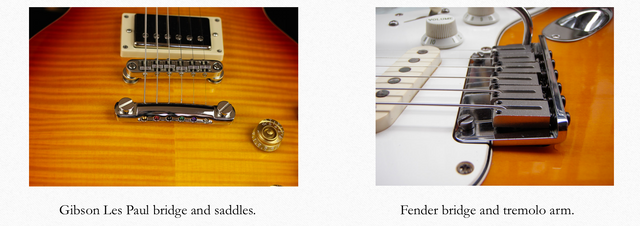
Figure 29
The first most noticeable difference in most case’s is the Stratocaster has a tremolo fitted to the bridge, there have been hard tail Stratocaster models and the Les Paul has been fitted with bigsbys but it’s not common so I will work with the average models where the Les Paul has no tremolo and the Stratocaster has.
In the case of the Stratocaster it has a 1 piece bridge that houses the tremolo arm and the saddles for tail stop. The strings move when the tremolo arm is used due to tension.
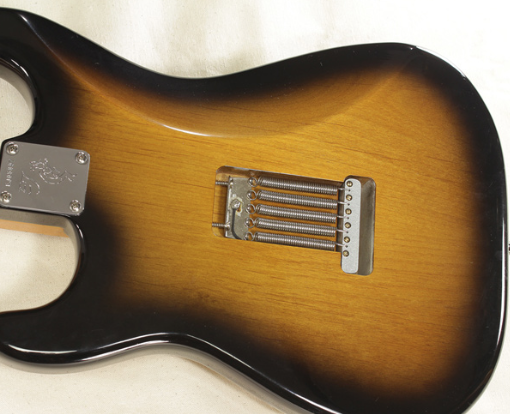
Figure 30 Underneath the Stratocaster bridge lays the springs that tension the tremolo system.
The Les Paul however has 2 pieces of hardware the saddles and the tail piece that holds the strings. The lack of tremolo system thus no movement should be great for keeping the guitar in tune also the adjustment wheels make adjusting the action fairly simple.
For both guitars the hardware is normally made from stainless steel.
Paints and finishes.
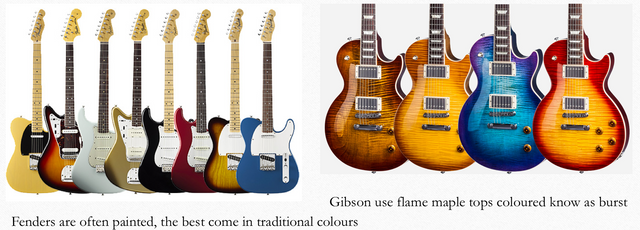
Figure 31
In the case of both Fender and Gibson how your guitar is finished and what it looks like will very much be price dependent but in the case of both the nearer the guitar is to an original 50’s 60’s guitar the more you will pay. In the case of Fender the classic colours that were once done with car paint are now custom shop colours or only available on the reissues but if you want the correct paint and lacquers it will be a custom shop job.
The lacquer most favoured when it comes to Fender guitars is Nitrocellulose lacquer it was thin, dries very quickly, and fades fast. It was cheap and it was the favorite of car manufactures at the time which is why it probably was used with the car paint in the early days of Fender. Gibson also use Nitrocellulose lacquer to finish their guitars on the better models. Cheaper models of both fender and Gibson will not have Nitrocellulose lacquer.
Gibson have the Maple top and have over the years created many colour variations known as “bursts” the type of burst is dependent on the paint colour and the grain of the wood.
Who plays them and why?
Disclaimer, I don’t like Ted but it’s a great quote. It raises a valid point some play these guitars for almost cultural reasons.
Figure 32
“Gibson has been making the finest electric guitars the world has ever witnessed for over 70 years. They are as American as God, guns and rock and roll. Ted Nugent”
Figure 33
Jeff Beck on the differences between a Strat and a Les Paul.
MC:
“You've played both Les Paul and Fender Stratocaster guitars during your career. How do they compare and contrast?”
Beck:
“It's a totally different animal. One is for very subtle and, I would say, more musical things that you can distract and abuse. You can't do that with a Les Paul. It's too delicate. It's got a very delicate tone; most people don't ever realize that because they are plugged into monstrous amplifiers which completely, instantaneously covers up the unique sound quality it has.
All those years of development go straight out the window when you overload the amp.
A Les Paul, which is kind of a sissy guitar compared to a Strat anyway. The Les Paul is heavier, but because of that bulk you can do bends on it more easily. Also, the Les Paul's lack of a vibrato arm means you're not wrestling against the spring-loaded bridge all the time. The Strat is the ultimate because it's like having a miniature pedal steel within it. Once you get familiar with it where the bends are and where they meld down into a fourth or whatever, you can do all kinds of pedal-steel-like things, which I think are cool.."
Figure 34
Slash on Les Pauls
“I did go through a trial-and-error period where I tried out lots of different guitars, but within a couple of years I was right back to the Les Paul. From that point it’s stayed with me ever since. I have other guitars—and I love a lot of them—but I’m most at home on a Les Paul. It’s interesting: most of the time I would even rather make a Les Paul do the things those other guitars do. From the get-go, the Les Paul spoke to me.”
Figure 35
Joe Perry on Les Paul’s
“I’m still looking for a ’68 Goldtop. The first Les Paul I bought was a ’68 Gold top. Now that’s a sought-after Les Paul, but I only paid $300 or $400 for it at the time. I’d love to have that guitar back — especially looking like it did before I scraped the gold off of it. I’ve got a couple of Goldtops that are close, but that particular guitar is the one. One of the rumors is that after they stopped making Les Pauls in ’60 or ’61, and then started making them again in ’68, Gibson had a lot of parts left over. If that’s true, a lot of those pieces of wood were just sitting around the factory and got used. And the pickups were great.”
Figure 36
Lenny Kravitz
“My first guitar, a Fender Jazz Master, I traded it in for a Les Paul Deluxe.” Lenny Kravitz
Figure 37
Kurt Cobain on Fenders
“I like guitars in the Fender style because they have skinny necks”. Kurt Cobain
Figure 38
Hank Marvin on the Stratocaster.
"It was great looking, and we liked the sound of it, and we’d heard that James Burton used a Fender, so we got a catalogue from the States. We could see that Buddy’s guitar was the Stratocaster and as that was their top-of-the-range model, we assumed that James Burton would also have one. For some reason, we always thought it was called Flamingo Pink. But apparently they never had any such colour; it was Fiesta Red – anyway, we ordered that in what was pretty much the top-of- the-range specification.”
Figure 39
Mark Knopflers guitars. https://www.groundguitar.com/mark-knopfler-gear/
This article in the above link is for a list of the guitars Mark Knopfler has used over his career. Mark is undoubtedly a great all round guitarist and the list of his guitars shows he used Fender and Gibson’s threw out his career. Horses for courses I think.
Conclusion.
From doing this research and having owned and played many of these guitars over the years I would have to conclude the Gibson Les Paul is the superior instrument for the following reasons. Firstly, I will start at the top and work down.
The tuners on both guitars are good quality but Gibson pioneering the robotic tuning system puts them ahead as like it or not it is a serious advance in guitar technology. The headstock however on Gibson’s is well known for breaking but is said to be stronger after a fix but never the less Fender win on the headstock because you never see a broken Fender neck.
The nut and fret board, Gibson offered the more exotic wood with Ebony but only on certain models both Fender and Gibson offer Rosewood but only Fender offer Maple. The reason I would say Gibson fret boards are nicer in terms of construction is the inlays and fret binding those details give the fret board a over all look and feel that has a real feeling of quality.
The neck, Fenders neck is detachable where as Gibson’s is fixed to the body, I believe this to be a superior method of construction in terms of the tone of the instrument as it is closer to being one unit. Both guitars have truss rods and on the USA Fenders there is a Bi-Flex truss rod that is a very good feature for setting up the guitar combined with the neck adjuster at the join. Fender necks are made from Maple regardless of Rosewood or Maple fret board.
Over all it is the threw neck that I feel is the best feature so I feel the Gibson neck is better but guitar necks are very subjective in terms of playability so which neck is better to play would depend on who you ask.
The body, Gibson favour Mahogany and Fender favour Alder, both have classic shapes and have never been bettered. The Gibson body is chambered for weight relief as Mahogany is a heavy wood but combine it with a threw neck of the same material the guitar almost becomes one piece although it isn’t in reality but tonally I feel it is better. A one-piece body is a rarity on the higher end guitars you may expect to see the body made from 2 pieces. Again the threw neck construction come into play here.
The two-piece Maple top on the Gibson often turns the instrument into a thing of beauty and adds a far superior finish compared to any thing Fender produce.
The Hardware. Both Fender and Gibson on the mid to high end range of guitars offer very high standards in terms of bridges, and saddles and the obvious difference is Fender offer a tremolo as standard and the guitar body is designed for a tremolo. I would conclude if you use a tremolo the Fender probably is the better design and Fenders do stay in tune very well where as some Gibson’s where said to have problems staying in tune despite having a fixed tail and bridge. I personally have not had many tuning issues with either Fender or Gibson.
The Electrics, Because of the vast amount of third party pick ups and the good quality of both Fender and Gibson’s pickups it is hard to draw a conclusion here as every player is looking for a different sound and that maybe found in either guitar depending on what he’s looking for. Personally I feel what sound you get will be also influenced by the amplifier you use but overall I prefer the richness of the Les Paul over the twangyness of the Stratocaster.
Both companies wire up the guitars well using quality components for the pots and jacks.
The overall guitar. The Les Paul in the standard range is heavier than the Stratocaster and has a overall feel of a quality guitar that you would expect for a guitar costing in excess of £2000. When plugged in the rich tones and clarity of the notes are instantly noticeable due to the quality of the pickups even as standard. The looks of the guitar is stunning and in the hand it just feels quality. The Stratocaster although a beautiful looking instrument actually looks better the older it gets, it looks like a work horse rather than a Rolls Royce and for many that is what they are looking for in a guitar. A well set up USA strat can be a beauty to play and they sound great but they don’t have the quality feel that you get from a Les Paul.
It’s a close call because I love them both but evidence suggests The Gibson Les Paul is the superior constructed instrument.
From reading the opinions of other respected guitarist and asking players I know personally I stand by my conclusion that the Les Paul is indeed the finer instrument in terms of build quality but it’s horses for courses some times musicians use the guitar they feel gives them the right sound for a record others have built careers on the sound of one guitar and that said the Stratocaster is still probably the most versatile guitar to date.
The final conclusion I came to is there will never be a worlds best guitar as one player’s idea of a great guitar can differ so much from another’s but it is possible to draw conclusions from the research based on the construction and with that in mind the Gibson is the better made instrument in terms of quality although the fender could fairly claim to be the stronger construction.
This is my thoughts on this feel free to disagree as each player is different.
Gym.
Wow, extensive and informative! Love the post! I've owned both and have to say it's players preference. The distinct difference for me though other than one being a Gibson and the other a Fender is sound. Both are unique in there own sound. The other major difference is ease of maintenance or ease of repairs by the owner versus a Luthier. Fenders are easier IMO to repair than Gibsons. A main example is the Fender's Bolt on neck versus the Gibson's "Glued in joint" neck. Other issues would be durability for me. Drop a Fender and generally it'll still be good to go. Drop a Gibby and it'll more than likely break at the head stock due to its angle. Gibby's are far more fragile or at least for me they have been. In hand they are totally different animals to the touch and to the ear. Just some things to think about over all although I like both of them for what they are. Nice post! Enjoyed.
Hi thanks for your reply, I agree entirely, each player will love different guitars for all sorts of reasons but thats the beauty really there will never be a best guitar as everyone is different. In another piece I wrote I found the strat to be the most versatile mass produced guitar ever made so in terms of what you can do to it the strat comes out on top. Heres a link to the other piece I wrote about Strats.
https://steemit.com/music/@pinkpoker/why-the-fender-stratocaster-is-the-best-all-round-electric-guitar-ever-mass-produced
i play and use mainly my strat- but i just bought my first SG and am happy to hear the sound -- but i have to say the fender is much easier to play well am now following you in support